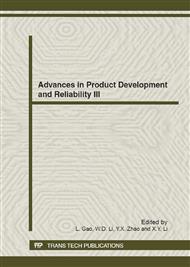p.176
p.182
p.188
p.194
p.200
p.206
p.212
p.218
p.223
A Design Space Exploration Method Using Artificial Neural Networks and Metamodeling
Abstract:
This paper suggests a design space exploration method using Artificial Neural Networks and metamodeling to systematically reduce the design space to a relatively small region. This method consists of three major steps. Firstly, self-organizing maps is employed to analyze design variables and objective function(s) with the original samples as preliminary reduction optimization of the initial large design space. Successively, resampling within the preliminary reduction space, clustering sample points using the fuzzy c-means clustering method with the given number of cluster, and choosing the most attractive cluster to construct kriging model and identify the design optimum within the reduced design space in the last step. The accuracy and validity of proposed methodology is proved by a heat exchanger design problem. It is found that the proposed method can intuitively capture promising design regions in which it is efficient to acquire the global or near-global desigm optimum.
Info:
Periodical:
Pages:
200-205
Citation:
Online since:
June 2012
Authors:
Price:
Сopyright:
© 2012 Trans Tech Publications Ltd. All Rights Reserved
Share:
Citation:


